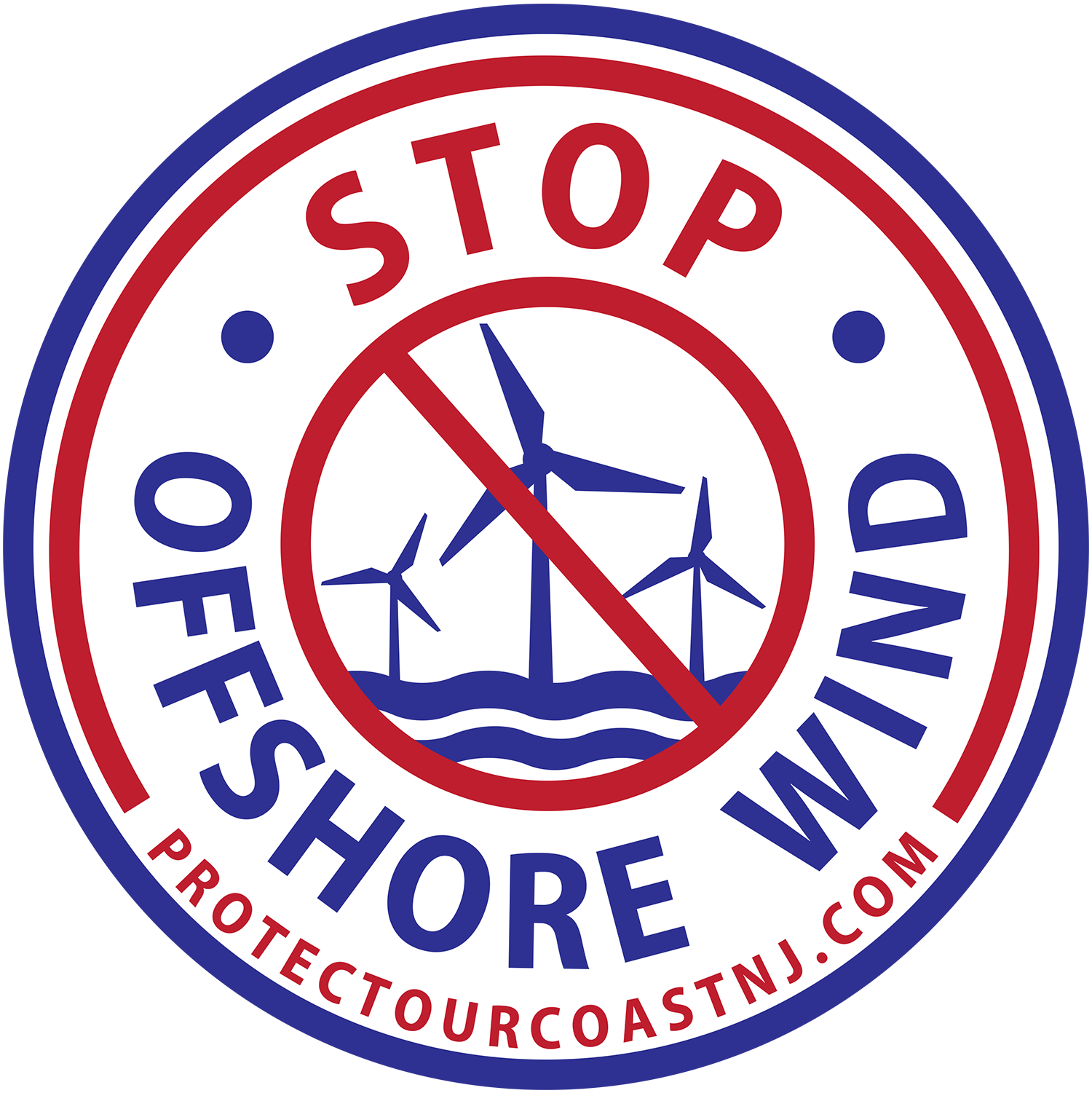
We are residents, homeowners, business owners, fishermen and visitors of coastal communities. Join The Fight To Protect Our Coast From Ocean Industrialization!
Protect Our Coast is a united non-partisan group with one common goal, Stop Offshore Wind Turbines and Prevent The Industrialization Of The Oceans. Large scale offshore wind developments were expedited without detailing the true effects on fisheries, wildlife and coastal communities.
Please research offshore wind for yourself. The topics are deep. Below we have listed a few topics below as well as some links for more information. Whether you are for or against, we want you to be informed! But we are confident you too will join our fight.
Please support Protect Our Coast NJ today to stop the industrialization of our ocean by offshore wind energy. We are actively challenging these projects in the courts. We need your support as it’s the only way to stop this reckless industry from destroying coastal and marine environments.
Please consider a contribution to Protect Our Coast NJ.
Click the link below We thank you for your support!
Protect Our Coast NJ Files US Supreme Court Brief In Support Of Seafreeze Challenge To Vineyard Wind Offshore Project
Argues climate activists in the Biden Administration created a shadow regulatory process that fast-tracked offshore wind, ignored threats to endangered right whales, ratepayers, taxpayers and the tourism industry
“The fight against the industrialization of our oceans is not over,” said POCNJ President Robin Shaffer.“ Even now, the Empire Wind project off norther New Jersey and New York City is dumping hundreds of thousands of tons of rock onto the seafloor, destroying sea life and habitat forever. POCNJ is happy to support Seafreeze in its efforts against the Vineyard Wind project. Vineyard Wind is the site of the single worst offshore wind environmental disaster in U.S. history. This was a direct result of the Biden Administration’s shadow regulatory approach that cut corners in order to rush offshore wind projects through the permitting process.”
“There can be no doubt whatsoever that the Biden Administration handed its review of offshore wind projects to climate activists within the Administration who created a shadow regulatory process that intentionally ignored the multiple statutory and regulatory requirements related to economic impact,” Donohue argues to the U.S. Supreme Court. “In so doing, the Biden Administration not only moved the extraordinarily endangered right whale one step closer to extinction, it also placed in economic peril countless businesses and families that depend on commercial fishing and coastal tourism for their livelihood.”
Join the Protect Our Coast NJ Facebook Group Today! All are welcome to join in on the discussions. Also please use the contact us form to let us know you want to volunteer and help POCNJ fight against the industrialization of our ocean.
Follow us on X: @njcoast_protect! We post daily updates about our fight to protect wildlife, fishermen, and working families from higher energy costs, taxes, and destruction of marine and coastal ecosystems.
Protect Our COAST New Jersey Petitions EPA to Halt SUNRISE WIND
Ocean City, NJ: Protect Our Coast NJ (POCNJ) submitted a petition to the federal Environmental Protection Agency on May 12, 2025 seeking to have EPA withdraw a permit issued by the Biden Administration to allow the Sunrise Wind offshore wind project to use an open loop cooling system rather than the more technologically advanced and environmentally safer closed loop system. The Bureau of Ocean Energy Management has stated that the potential effects from using open loop cooling systems include the discharge of heated water, use of chemicals, and trapping of fish larvae.
"President Trump in his January 20, 2025, Executive Order found 'alleged legal deficiencies and 'potential inadequacies in various environmental reviews' in the Biden Administration's offshore wind permitting process," said Protect Our Coast New Jersey President Robin Shaffer. "Secretary Burgum said that 'staff of the Department of the Interior has obtained information that raises serious issues with respect to project approvals' that were apparently 'rushed through by the prior Administration.' In connection with Orsted's Sunrise Wind project off of Southern New England, it is clear that the Biden EPA ignored legal, regulatory and environmental requirements in allowing Sunrise Wind to use a dangerous and polluting open loop cooling system. POCNJ has petitioned the EPA to undo this mistake and require Sunrise Wind to redesign the project to include a closed loop cooling system before any further permits are issued or any further work on the project proceeds.”
POCNJ has engaged former New Jersey Superior Court Judge Michael J. Donohue of the law offices of Blaney, Donohue & Weinberg, P.C., in Avalon, New Jersey, to represent POCNJ on the petition. Donohue represented the County of Cape May for several years and orchestrated their efforts that contributed to the abandonment by Orsted of their Ocean Wind One and Ocean Wind Two projects off of Cape May County.
"Sunrise Wind has obtained an EPA permit to pull nearly 8 million gallons per day of seawater from the Atlantic Ocean," Donohue said. That water will then be discharged back into the ocean mixed with chlorine and at temperatures as high as 90 degrees Fahrenheit. The Biden Administrations approval of this method ignores EPA's Best Technology Available requirement and no rigorous alternatives analysis was conducted to justify this method over a closed-cycle cooling system, despite the known and broad negative environmental impacts that will result, including harms to early life stages of many marine species."
Many offshore wind projects require the conversion of AC current to DC current in order to delivery electricity over long distance through cables on the ocean floor. This conversion creates tremendous heat and a cooling system is necessary. The open loop system Sunrise Wind intends to install will discharge super-heated water and pollutants into the Atlantic after sucking up nearly 8 million gallons of sea water each day and killing fish and crustacean larvae and other small forms of sea life in the process.
A copy of the petition can be viewed here: https://drive.google.com/file/d/1umoDHvbW6mhNKnEp_7yUtt_VqcgYjGXE/view?usp=sharing





